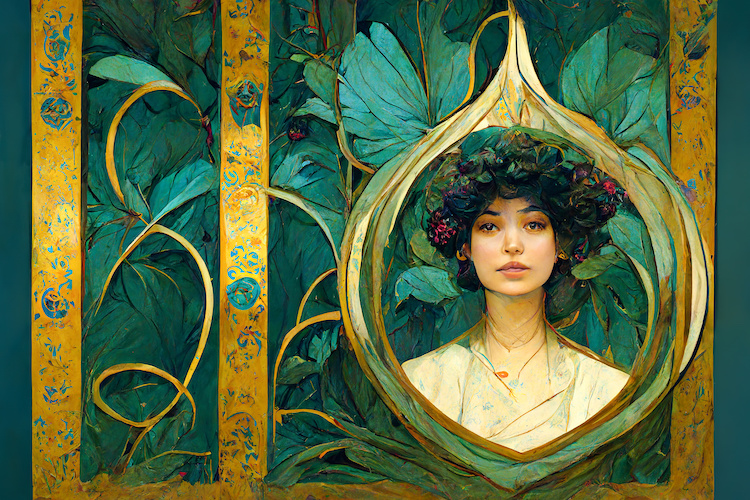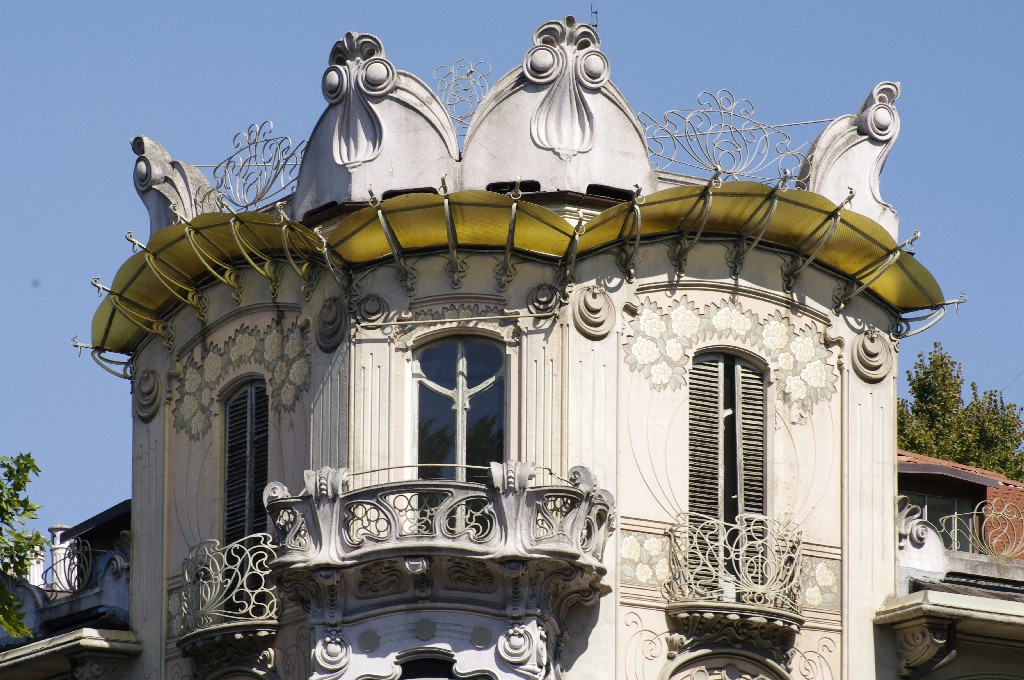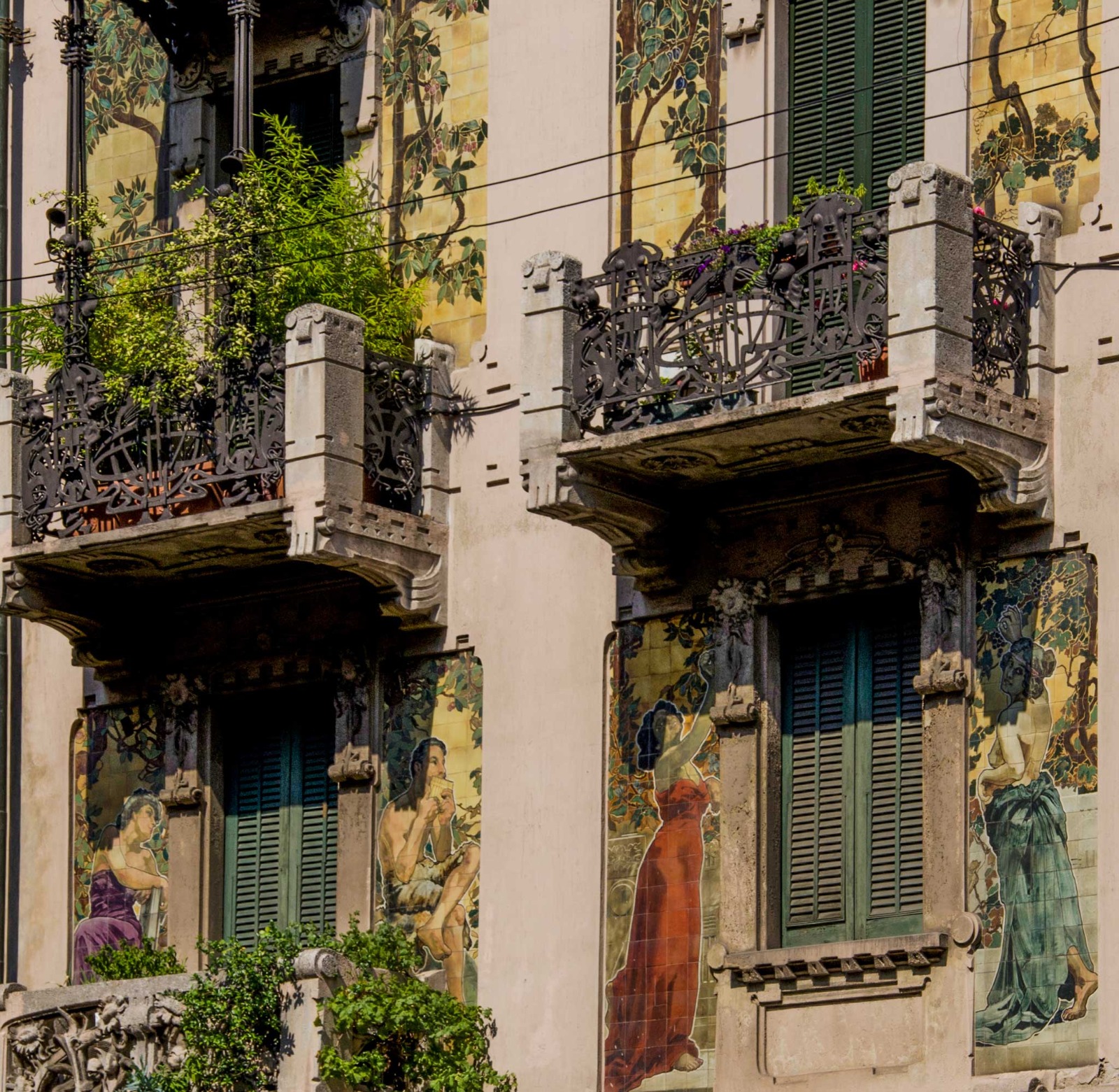
Have you ever thought about the appeal of the Liberty style in Italy and how it shaped the Italian architectural aesthetic of the early 20th century? With this post, I invite you to immerse yourself in a fascinating journey that takes us back to an elegant and lively era.
The Art Nouveau style, a well-known evolution of French Art Nouveau, is an artistic movement that took root in Italy, reflecting the desire for freedom and advocating a return to the beauty of nature in an era dominated by industrialisation.
The charm of Liberty style in Italy between history and elegance

Casa Fenoglio-La Fleur a Torino
The Liberty style, an Italian manifestation of Art Nouveau, emerged as a revolutionary phenomenon, breaking with the pre-existing artistic traditions of the late 19th century. This current, in fact, represents the desire to go beyond schemes and conventions, directing the gaze towards a beauty inspired by nature.
A reaction, therefore, to the rigid geometries that industrialisation was imposing and which by then was about to dominate the European landscape of that period.
THE BIRTH OF LIBERTY IN ITALY
The peculiarity of Liberty in Italy lies in its ability to adapt to and reflect the cultural and social nuances of the time. If the name derives from the famous Arthur Lasenby Liberty, founder of the Liberty warehouses in London, famous for selling exotic objects that represented a modern and innovative taste, in Italy Liberty manifested itself as a synthesis between the renewed European awareness and the all-Italian desire for progress, a relatively new concept in a historically conservative nation.
NATURE AND ARCHITECTURE
Liberty in Italy is expressed in a style that looks to nature for inspiration but in which natural forms are interwoven into architectural structures, developing into sinuous lines and floral elements.
Art Nouveau architecture not only broke with tradition, but celebrated a new emerging bourgeoisie eager to express a sense of modernity and refinement through buildings that challenged traditional aesthetic conventions.
THE CITIES OF Liberty IN ITALY
1902 was a key year for the affirmation of Liberty style in Italy, thanks to the International Exhibition of Modern Decorative Art in Turin, an event that consolidated the inclination towards a new aesthetic. Here, the work of Raimondo D’Aronco, together with other innovative architects, initiated a movement that would later spread throughout the country.
Cities such as Milan, Palermo and Turin became the theatres of Art Nouveau expression, with buildings such as Casa Fenoglio-La Fleur in Turin, Palazzo Fidia and Casa Galimberti in Milan being the most significant examples of the Art Nouveau style.

Casa Galimberti a Milano
Liberty style in Italy is not just an artistic current; it represents a crucial phase of transition and openness towards new forms of artistic expression. It manifested a clear desire for modernity and progress in a changing nation, reflecting an era of fervent optimism and renewed appreciation for the beauty of nature in its purest and most authentic form.
Through its sinuous forms and intricate details, Liberty continues to capture our imagination, bearing witness to a distinctive period in the history of Italian architecture.

